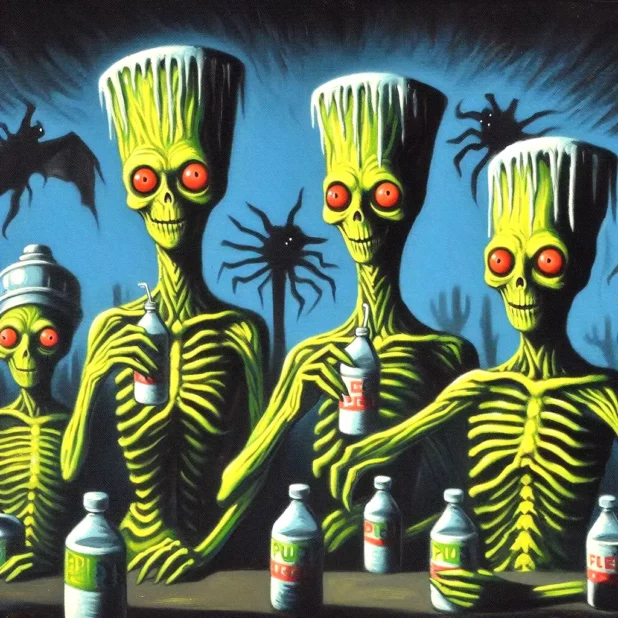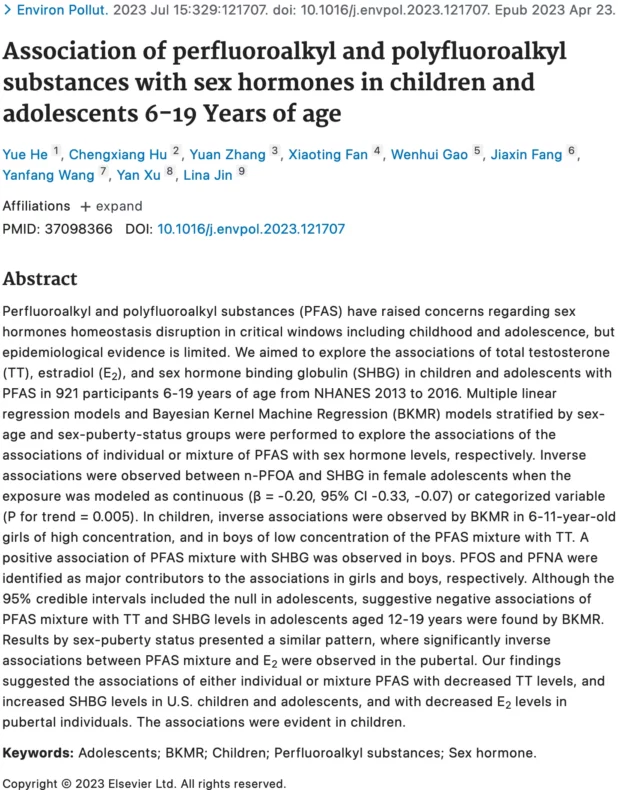This is a supposed “new report.”
But people have know about this issue since the 1990s.
And come on. You all know that water from a plastic bottle tastes like plastic. You can taste the plastic. It’s a strong plastic taste. Of course it is all going into your body. You’re drinking it.
CNN:
By contributing to the development of chronic disease and death, a group of hormone-disruptive plastic chemicals is costing the US health care system billions — over $249 billion in 2018 alone, a new study found.
“The real contribution of this work is helping the public understand how much of the human health threat of endocrine-disrupting chemicals is due to plastics,” said lead author Dr. Leonardo Trasande, a professor of pediatrics and population health at NYU Langone Health in New York City.
“We’re talking about cancer. We’re talking about brain damage in young children. We’re talking about obesity and diabetes, heart disease and early deaths in adults,” Trasande said. “Right now, the United States is not considering the costs to its own population of industries which continue to produce and consume plastic in the US.”
…
The new research analyzed the impact of four groups of chemicals used in the production of plastic products: Flame retardants called polybrominated diphenyl ethers, or PBDE; phthalates, which are used to make plastic more durable; bisphenols such as BPA and BPS used to create hard plastics and resins; and per- and polyfluoroalkyl substances, also known as PFAS.
However, these are just a fraction of the chemicals used to make plastics. A United Nations report published in May found more than 13,000 chemicals are used in plastics production.
The four chemicals measured in the new study, however, have been widely studied over years and decades, experts say. All are thought to interfere with the body’s mechanism for hormone production, known as the endocrine system, and cause damage to developmental, reproductive, immune and cognitive systems, the report said.
“The biggest impact of endocrine-disrupting chemicals is on children’s brain development because they disrupt thyroid hormones in pregnancy, which is crucial to that development,” Trasande said.
Flame retardants: Most of the health cost burden in the report — $159 billion — was from exposure to PBDE flame retardants, which scientists say can settle and remain for long periods in fat and other tissues in the body. The US Environmental Protection Agency is “concerned” that certain flame retardants “are persistent, bioaccumulative, and toxic to both humans and the environment.”
“The critical endpoint of concern for human health is neurobehavioral effects,” the agency said. “Because these chemicals are not chemically bound to plastics, foam, fabrics, or other products in which they are used, making them more likely to leach out of these products.”
Phthalates: This family of chemicals accounted for $67 billion of the health care costs in 2018, according to the study. Phthalates have been connected in studies with reproductive problems, such as genital malformations and undescended testes in baby boys and lower sperm counts and testosterone levels in adult males. Other studies have linked phthalates to childhood obesity, asthma, cardiovascular issues and cancer.
Phthalates are found in hundreds of consumer products, including food storage containers, shampoo, makeup, perfume and children’s toys. The synthetic chemicals may contribute to some 91,000 to 107,000 premature deaths a year among people ages 55 to 64 in the US, according to an October 2021 study.
Bisphenols: Exposure to bisphenols accounted for $1 billion in 2018 health care costs, the study found. These chemicals are found in eyewear and water bottles, and they may coat some metal food cans, bottle tops and water supply pipes.
The chemical BPA has been linked to fetal abnormalities, low birth weight, and brain and behavior disorders in infants and children. In adults, BPA has been linked to diabetes, heart disease, cancer, obesity and erectile dysfunction.
Premature death was also associated with BPA exposure, a 2020 study found. People who had higher levels of bisphenol A in their urine were about 49% more likely to die during a 10-year period.
Per- and polyfluoroalkyl substances: Exposure to PFAS chemicals was associated in the study with $22 billion in health care costs. Carpets, couches, nonstick cookware, stain-resistant clothes, cell phones, cosmetics, the lining of fast-food wrappers — the list of popular products that contain PFAS are numerous and nearly impossible to avoid.
We’re going to end up more plastic than human.
You look at people, and they just look like a bunch of mutant freaks.
They didn’t used to look like this. It’s processed foods and it’s plastic.
Scientists revealed bottled water contains up to 100 times more minuscule pieces of plastic than previously reported. According to a recent study, the average liter of water harbors thousands of nanoplastics, each a fraction of the width of a human hair. https://t.co/KbveExNWgH pic.twitter.com/NTnIv8g6B4
— CBS Evening News (@CBSEveningNews) January 10, 2024
Now we’re hearing “100 times more particulate.”
CNN:
In a trailblazing new study, researchers have discovered bottled water sold in stores can contain 10 to 100 times more bits of plastic than previously estimated — nanoparticles so infinitesimally tiny they cannot be seen under a microscope.
At 1,000th the average width of a human hair, nanoplastics are so teeny they can migrate through the tissues of the digestive tract or lungs into the bloodstream, distributing potentially harmful synthetic chemicals throughout the body and into cells, experts say.
One liter of water — the equivalent of two standard-size bottled waters — contained an average of 240,000 plastic particles from seven types of plastics, of which 90% were identified as nanoplastics and the rest were microplastics, according to the new study.
Microplastics are polymer fragments that can range from less than 0.2 inch (5 millimeters) down to 1/25,000th of an inch (1 micrometer). Anything smaller is a nanoplastic that must be measured in billionths of a meter.
“This study, I have to say, is exceedingly impressive. The body of work that they put into this was really quite profound … I would call it groundbreaking,” said Sherri “Sam” Mason, director of sustainability at Penn State Behrend in Erie, Pennsylvania, who was not involved in the study.
The new finding reinforces long-held expert advice to drink tap water from glass or stainless steel containers to reduce exposure, Mason said. That advice extends to other foods and drinks packaged in plastic as well, she added.
“People don’t think of plastics as shedding but they do,” she said. “In almost the same way we’re constantly shedding skin cells, plastics are constantly shedding little bits that break off, such as when you open that plastic container for your store-bought salad or a cheese that’s wrapped in plastic.”
But it always tasted like plastic?
You can taste the plastic.
The government won’t do anything about it. Instead they will tell you to build windmills, further poisoning the earth with these types of chemicals that destroy our bodies.
“Drinking out of bottle of water should be a thing of the past.”@drsajumathew joins @brikeilarcnn & @Boris_Sanchez to discuss a study which found bottled water contains thousands of nanoplastics so small they can invade and damage the body’s cells. pic.twitter.com/f6UzLpxeX9
— CNN News Central (@NewsCentralCNN) January 9, 2024
 Daily Stormer The Most Censored Publication in History
Daily Stormer The Most Censored Publication in History








